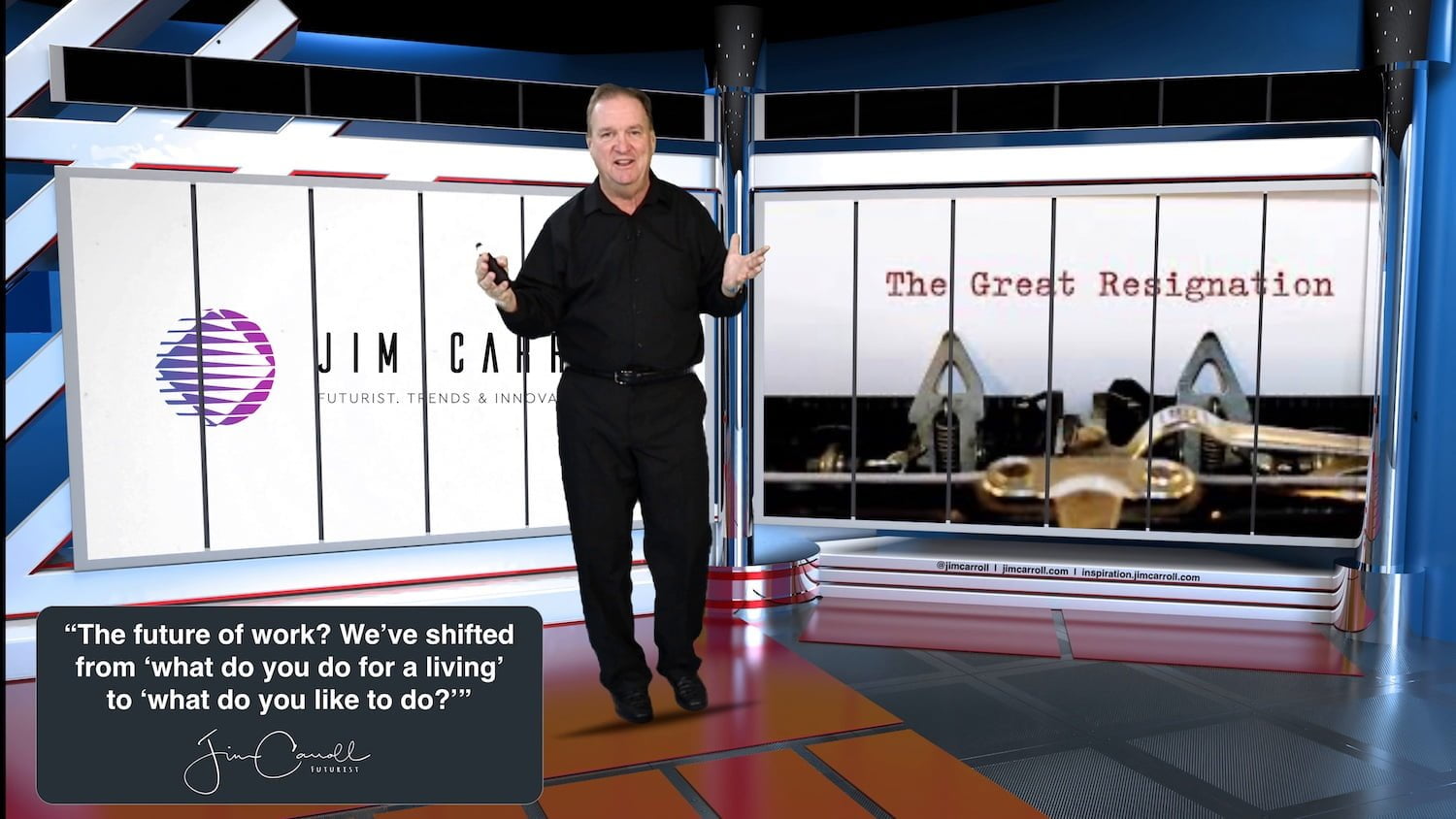“The future of work? We’ve shifted from ‘what do you do for a living’ to ‘what do you like to do?’” – Futurist Jim Carroll

The shift to life-focused career decisions? It’s not new.
The ‘Great Resignation?’ It too is not a new trend – in fact, I’ve been speaking about it since at least 2004, when I first came up with my ‘snowboard dude’ story, based on observations about the future of the workforce. It tells the story of a young fellow they were trying to hire for a full-time engineering position – and he turned them down because their structured office hours and corporate culture would interfere with his ability to hit the fresh powder on the hill.
I ended up writing an article, “Don’t Mess with My Powder, Dude: Reflections on the Workforce of the Future” – and it pretty much defines where we find ourselves today with one of the most significant aspects of the “Great Resignation.” Quite simply, vast numbers of people are deciding that life, rather than the work grind, is far more important. In other words – the great resignation. Read the original PDF here.
I hit the virtual broadcast studio the other day and filmed an entire ‘Headlines’ video to put into perspective what it is really all about. It’s worth a watch.
It’s fascinating to go back and read that document now because it defined precisely where we find ourselves today with what is being called “The Great Resignation.” But as I explain in the show, it’s a topic that goes back to my 1997 book, “Surviving the Information Age” – and even before that, to an article in the New York Times in 1987 that had a profound impact on my future thinking: “Tomorrow’s Company Won’t Have Walls.”
The snowboard dude? Here’s what I wrote.
We are in an era of massive transformation of the modern organization.
Through the years, I have come to a quirky but fascinating conclusion about these conversations: different generations have very different attitudes towards their life and their careers. For example, baby boomers inevitably ask me the question, “what do you do for a living?” Being in my late 40’s, I can understand that much of how we define our- selves is based on how well we’ve done with our careers.
Snowboarders, on the other hand, who almost always in- evitably seem to be younger than the age of 25 (though yes, I know, there are millions of 30, 40 and 50-year-olds who board!) always tend to ask me a different question: “What do you like to do?”
What’s with these “kids”’ is that if they can’t find a career that provides an adequate fit between what they do for fun (“boarding”) and what they do for a living (“designing”), they’ll turn down the opportunity.
And that comes to the heart of the question asked by the CEO: ‘what’s with these “kids”’ is that if they can’t find a career that provides an adequate fit between what they do for fun (“boarding”) and what they do for a living (“designing”), they’ll turn down the opportunity.
I worked into my presentation to the company two fascinating statistics: more than 50% of American kids now believe that self-employment is more secure than a full-time job. And a survey of engineering students indicated that the majority believed that a full-time career was about 2-5 years long.
Notice anything similar in the coverage of “The Great Resignation” today? The same types of statistics and observations.
What’s old is new again!




GET IN TOUCH
Jim's Facebook page
You'll find Jim's latest videos on Youtube
Mastodon. What's on Jim's mind? Check his feed!
LinkedIn - reach out to Jim for a professional connection!
Flickr! Get inspired! A massive archive of all of Jim's daily inspirational quotes!
Instagram - the home for Jim's motivational mind!